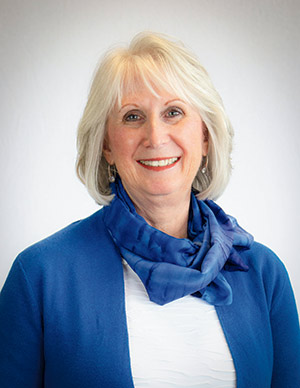Martha Rardin has been in healthcare foodservice for more than four decades. As the foodservice director and dietitian manager for all of the Hendricks Regional Health facilities in suburban Indianapolis, she oversees a $3.5 million foodservice program, which produces about 1,300 meals per day and supports in-room dining, retail and catering programs. That includes about 50 meals per day for Hendricks’ senior center and another 130 to Meals on Wheels each week.
 Martha Rardin, Director of nutrition and dietetics, Hendricks Regional Health, Danville, Ind.On the personnel side, Rardin oversees 77 employees, including 43 full-time equivalents and 5 dietitians. Add to the list one more job responsibility: co-managing the Center for Diabetes Excellence at Hendricks. Here, she directs the dietitians while the other director manages the nurses.
Martha Rardin, Director of nutrition and dietetics, Hendricks Regional Health, Danville, Ind.On the personnel side, Rardin oversees 77 employees, including 43 full-time equivalents and 5 dietitians. Add to the list one more job responsibility: co-managing the Center for Diabetes Excellence at Hendricks. Here, she directs the dietitians while the other director manages the nurses.
Rardin also serves as president of the Association for Healthcare Foodservice.
Q: What do you enjoy most about healthcare foodservice?
A: My heart is in managing people and kitchens. There is something so fundamental to me about being able to nourish people, including our visitors. Healthcare foodservice often is overlooked, but it is an important job and career and we work hard every day for all those we serve.
Q: What is your process for developing menus?
A: We have a chef who handles our retail and catering menus and we work together on our room service menu. I develop all of the nutritionals, oversee compliance, safety and sanitation and other regulatory requirements. I try to make sure we are always prepared for an impromptu inspection. During one of our daily huddles, someone had left a wet towel on the counter and we played “I Spy” until someone spotted the health code violation. You always have to be ready; it doesn’t matter if you’re short-staffed.
Q: How do you stay on top of all the changing information around nutrition and dietetics?
A: I rely heavily on AHF for education and networking and to stay in the loop. Recently there has been more chatter about the dysphagia diet, which was developed for those with a physical abnormality because of a stroke or other medical condition. There are new international standards for that diet now, so I have to be aware of what foods these patients can and cannot have.
I am also an active member of the Academy of Nutrition and Dietetics and try to read as much of their publication as I can. We all share information and hold a dietitian meeting every other week and invite our wellness-focused staff members to join.
Q: What does the kitchen setup look like at Hendricks?
A: Our kitchen is now nine years old, but I had a big hand in the design at the time. I worked with Scott Reitano of the Reitano Design Group here locally to design the kitchen with FIFO [first in, first out] principles in mind.
The kitchen is set up so that food comes in the back door and moves through to the front without crossing paths and with food safety in mind. We also designed the kitchen with space and steps in mind to enhance efficiencies. Another big consideration was sanitation. Everything is on wheels so that we can move things around and do a deep clean.



